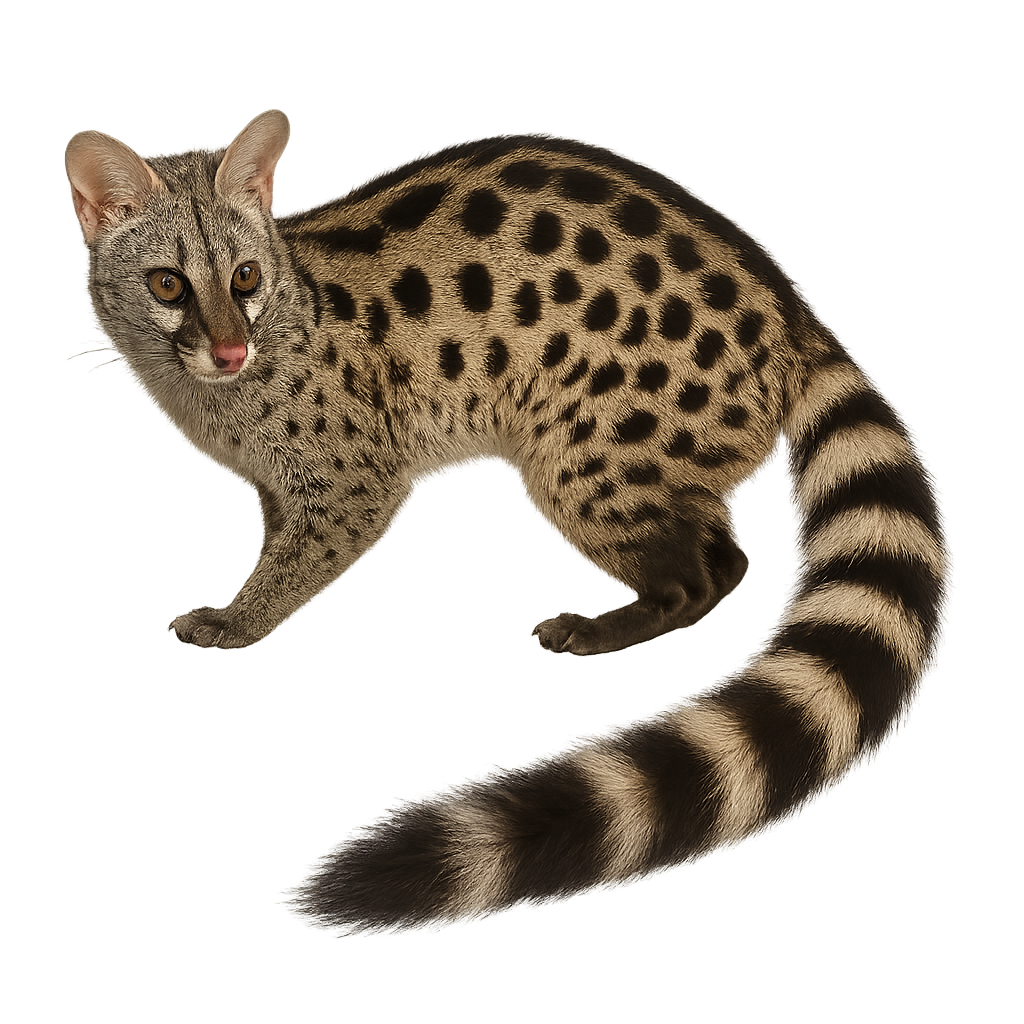Your wildlife photography guide.
Explore the common genet in detail, study its behavior, prepare your shots.
Where to observe and photograph the common genet in the wild
Learn where and when to spot the common genet in the wild, how to identify the species based on distinctive features, and what natural environments it inhabits. The WildlifePhotographer app offers tailored photography tips that reflect the common genet’s behavior, helping you capture better wildlife images. Explore the full species profile for key information including description, habitat, active periods, and approach techniques.
Common genets
Scientific name: Genetta genetta

IUCN Status: Least Concern
Family: VIVERRIDAE
Group: Mammals
Sensitivity to human approach: Tolerant
Minimum approach distance: 30 m
Rut period: January to February
Gestation: 70-77 jours
Births: March to April
Habitat:
Forests, woodlands, and grasslands of North Africa and Spain, often near human settlements, in semi-open areas and parks
Activity period :
Mainly active at night, generally discreet during the day.
Identification and description:
The Common Genet is a small, agile, and elegant carnivore, easily recognizable by its long and slender body, as well as its characteristic spots. It measures between 45 and 60 cm in length, with a tail measuring 40 to 50 cm, and typically weighs between 1.5 and 2.5 kg. Its coat is usually light gray or brown, speckled with dark spots that form a distinctive pattern on its back and flanks. The Common Genet has a bushy tail and a body shape that allows it to easily climb trees and slip into narrow spaces. It primarily inhabits forests, woodlands, and wooded areas in North and South Africa, as well as the Iberian Peninsula. This carnivore is omnivorous, feeding mainly on small mammals, birds, insects, fruits, and berries. The Common Genet is also an excellent climber, often seen moving through trees in search of food or to escape danger. While the Genet is not currently threatened, it faces threats related to habitat loss and human persecution.
Recommended lens:
300 mm – adjust based on distance, desired framing (portrait or habitat), and approach conditions.
Photography tips:
Use a telephoto lens to photograph the common genet, especially while it moves stealthily or perches in a tree.
Low morning or evening light is ideal to highlight its spotted coat and elusive behavior.
Be discreet and respect its space to avoid disturbing its natural activity.
IUCN status: Least Concern. Protect its habitat and avoid disturbance, especially at dusk when it's most active.
The WildlifePhotographer App is coming soon!
Be the first to explore the best nature spots, track rutting seasons, log your observations, and observe more wildlife.
Already 1 432 wildlife lovers subscribed worldwide

